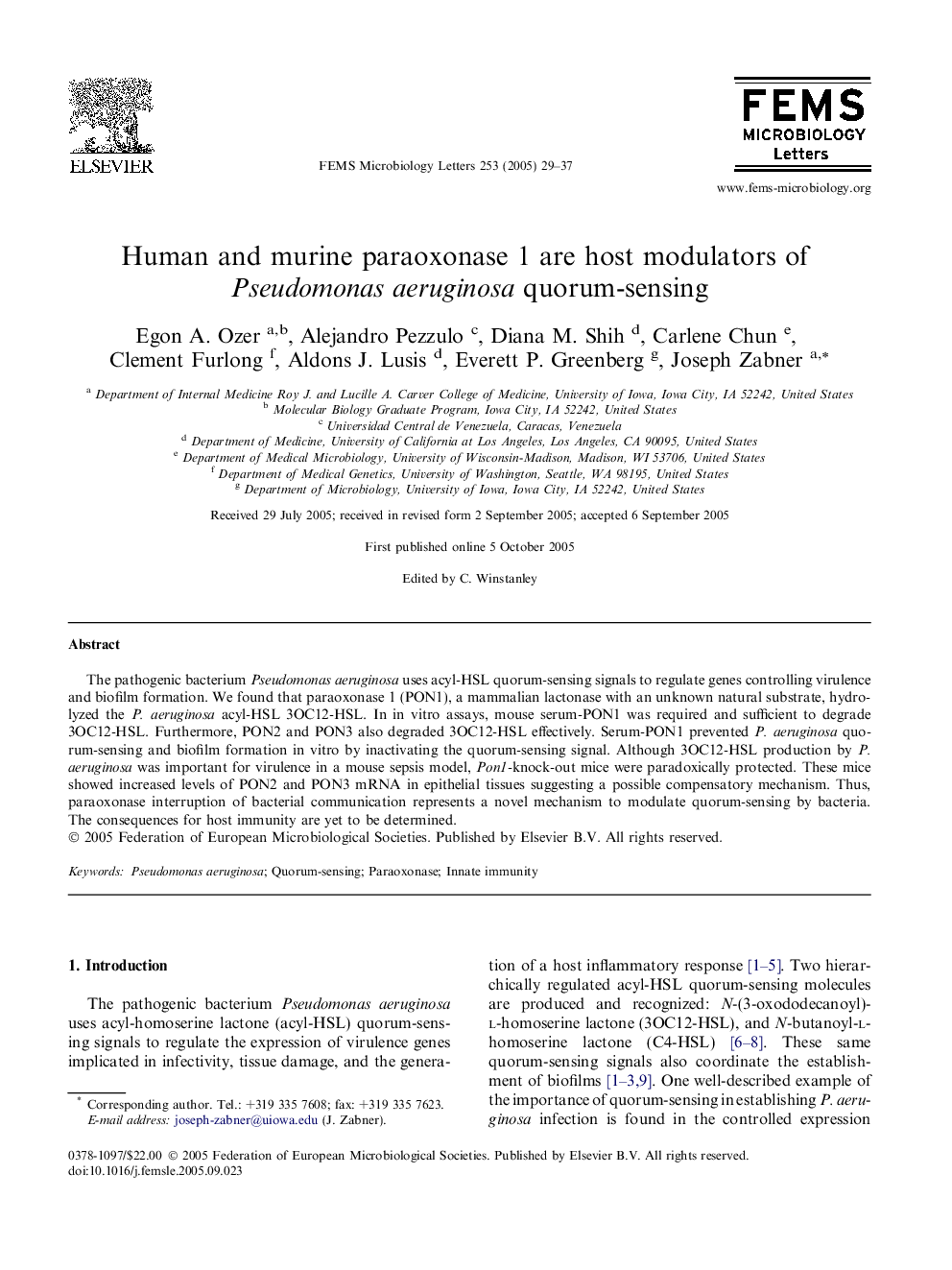| Article ID | Journal | Published Year | Pages | File Type |
|---|---|---|---|---|
| 9121279 | FEMS Microbiology Letters | 2005 | 9 Pages |
Abstract
The pathogenic bacterium Pseudomonas aeruginosa uses acyl-HSL quorum-sensing signals to regulate genes controlling virulence and biofilm formation. We found that paraoxonase 1 (PON1), a mammalian lactonase with an unknown natural substrate, hydrolyzed the P. aeruginosa acyl-HSL 3OC12-HSL. In in vitro assays, mouse serum-PON1 was required and sufficient to degrade 3OC12-HSL. Furthermore, PON2 and PON3 also degraded 3OC12-HSL effectively. Serum-PON1 prevented P. aeruginosa quorum-sensing and biofilm formation in vitro by inactivating the quorum-sensing signal. Although 3OC12-HSL production by P. aeruginosa was important for virulence in a mouse sepsis model, Pon1-knock-out mice were paradoxically protected. These mice showed increased levels of PON2 and PON3 mRNA in epithelial tissues suggesting a possible compensatory mechanism. Thus, paraoxonase interruption of bacterial communication represents a novel mechanism to modulate quorum-sensing by bacteria. The consequences for host immunity are yet to be determined.
Related Topics
Life Sciences
Biochemistry, Genetics and Molecular Biology
Genetics
Authors
Egon A. Ozer, Alejandro Pezzulo, Diana M. Shih, Carlene Chun, Clement Furlong, Aldons J. Lusis, Everett P. Greenberg, Joseph Zabner,
